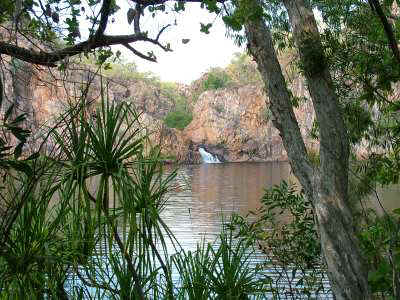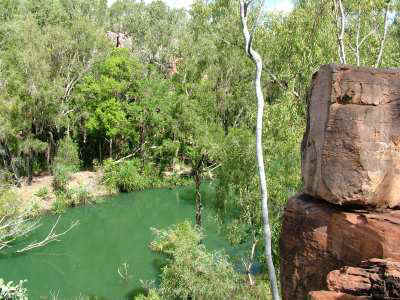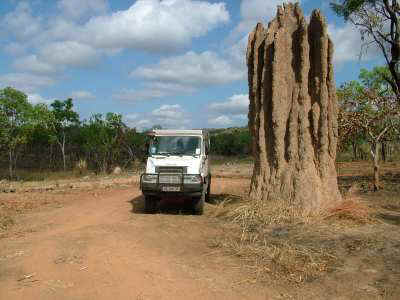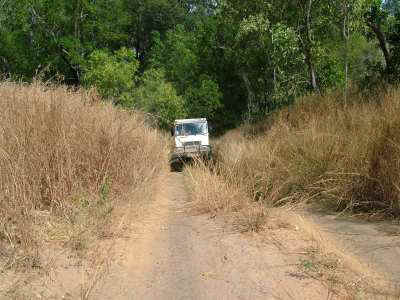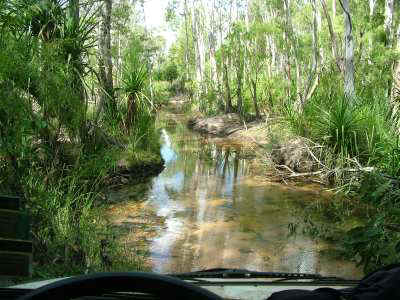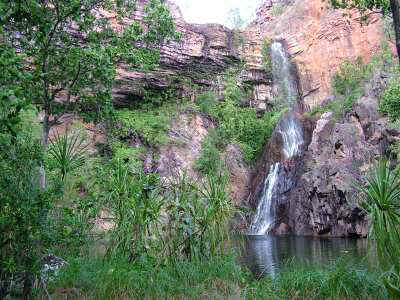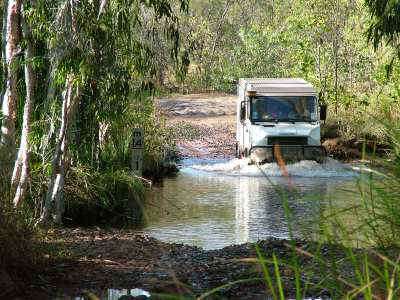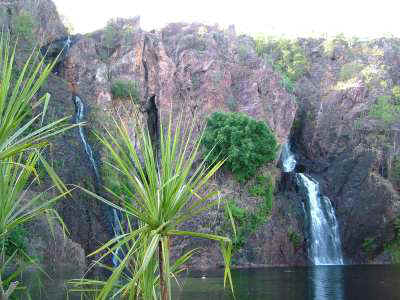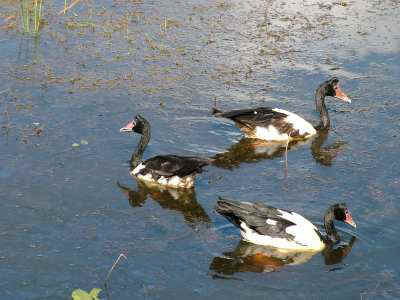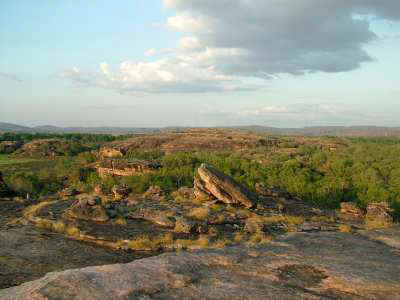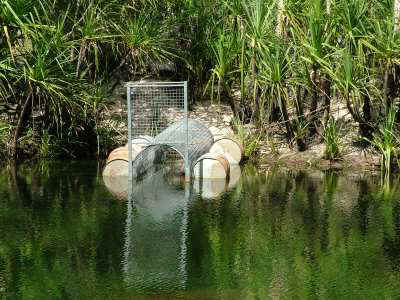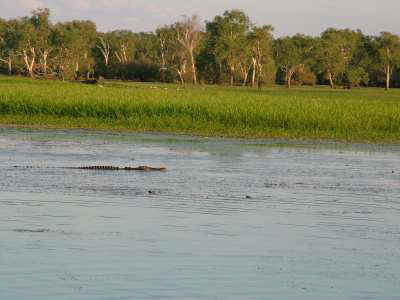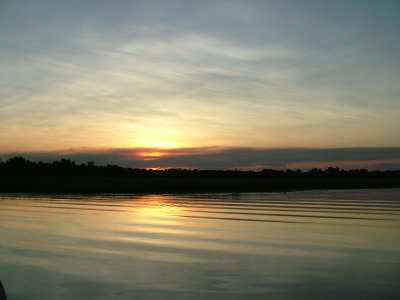| Home | |
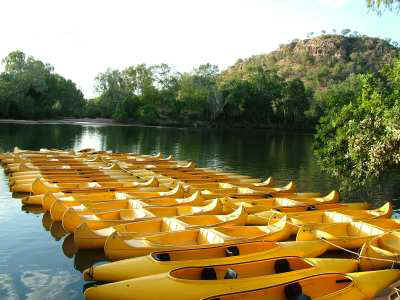 |
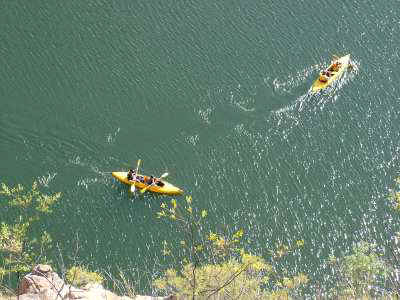 |
Canoeing is very popular in Katherine Gorge.
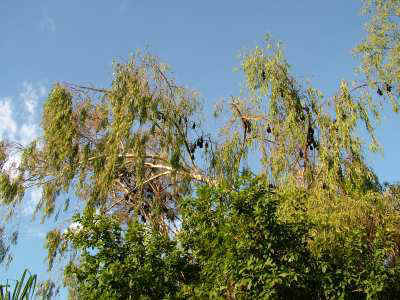 |
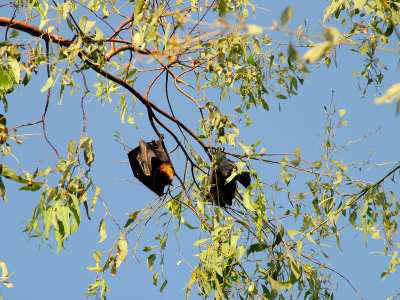 |
Hundreds of fruit bats are hanging in the trees, making increadible noise.
Edith Falls is a nice place to go for a swim.
Butterfly Gorge can by reached on a 4WD track from Douglas Hot Springs. The latter is an ideal camp spot and can be easilier be reached with a 2WD, even with a caravan. You can take a wonderful hot and relaxing bathe in the hot springs.
Rainbow Bee Eater at Douglas Hot Springs.
Giant Termite Mound near the road to Litchfield National Park.
Along the Southern Access Track we drive through Litchfield National Park. Wide vehicles will have trouble driving this track or at least suffer from scratches. With Troopie width, we're enjoying the bush adventure to the full.
Magnetic Termite Mounds are built more or less exactly in a North-South direction. The Termites are very temperature sensitive. Building their mounds this way, allows the the morning sun to heat their homes up quickly, but also makes sure that it doesn't get too hot in the midday heat.
Lost? No, no, this actually is the right road. There are several nice creek crossings to pass on the Southern Access Track.
A short nie walk leads from the campgound to Sandy Creek Falls.
Ford through Green Ants Creek.
Wangi Falls is the main attraction in the Litchfield park for those who come on the bitumen. Accordingly the car park is full and the short walk to the falls is quite crowded, at least in NT terms. On the longer walk above the falls, we only meet a few other people.
Palm-sized Golden Orb Spider at Wangi Falls.
Magpie Geese in Kakadu National Park.
Aboriginal Paintings at Ubirr. A lot of these paintings are used to teach the young. This one tells them not to steal.
Ubirr at sunset. Once Mick 'Crocodile' Dundee was gazing over these flood plains. But Ubirr was also home of the primordial Mozzie. From this place, these bloody bastards started their conquest on our planet. But still, as we had to learn, most of them stayed at home! Some legends even claim they can bite through the sheet steel of a Toyota. They didn't get through the double sheeting of our car, but anyway we must have picked up a whole lot of them some other way and the battle against them was fierce and took a couple of hours.
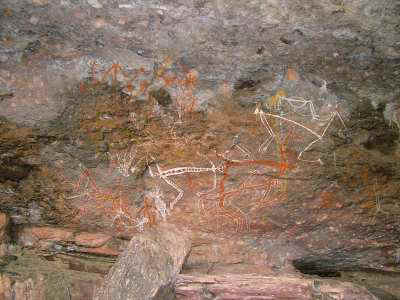 |
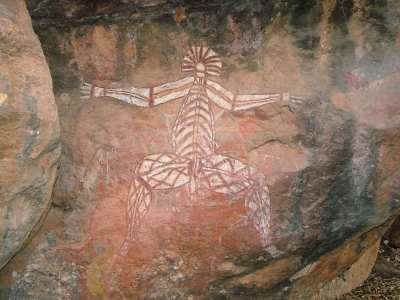 |
In Nourlangie we find the most impressive paintings on our journey so far. A ranger with Aboriginal ancestors is explaining the elaborate social system of his culture. Among other things, he explains that if kids are loosing their parents for some reason, there are always other member of the tribe previously elected to take over their role, just in case.
Jim Jim Falls still can only be reached with a 4WD. Although it is only the last 8 kilometres that require a vehicle with high ground clearance. Once you reach the corner of the water, after a couple of minutes walk from the car park, the usual crocodile warning sign posted reads "Keep away from waters edge". From there, the path is leading along the creek to the falls, most of the time very close to the water. Enjoy your walk and good on ya!
An empty Croc trap on the opposite bank is not really mollifying.
After the trip to Jim Jim Falls, we take the famous Yellow Waters Cruise, that is sort of mandatory when visiting the Kakadu for the first time. It only takes a couple of minutes until we get our first Saltie on the riverbank. We took the evening tour, as we wanted to leave the Mozzie infected area early next morning. A rewarding experience, absolutely. For ambitious photographers the early morning tour might be even better though.
Sovereign of the wetlands, master of survival. The Saltwater Crocodile inhabits coastal rivers, estuaries, swamps and billabongs in Northern Australia. They are found several hundred kilometres from the coast as well inland as offshore. They can lower their pulse to one beat per minute when waiting for their prey in a lonely billabong. And they can stay under water for over an hour without breathing. So be afraid, be very afraid. That's probably your best protection. Patricia our aboriginal tour guide says her grandma once told her: "Don't worry about the one you see, but be worried about the other 149 you do not see".
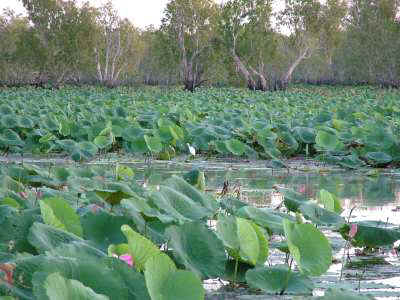 |
 |
Vast fields of Water Lilies are a habitat for abundant wildlife. The fruit of the Lilies looks like olives and the locals relish them as Bush Tucker.
Paperbark Trees are typical for the wetlands. If you take a close look, you can see the maximum water level of the last wet season.
Sunset on South Alligator River. We say "Bobo" to the Gagadju, the friendly locals, responsible for today's name of this National Park. Now we are heading towards drier regions again.
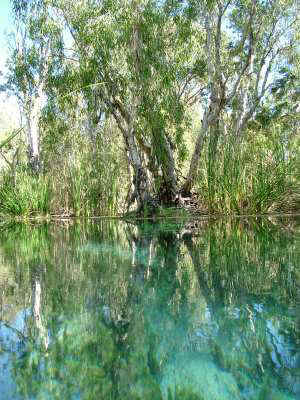 |
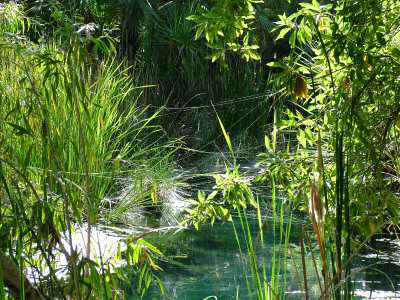 |
Mataranka Bitter Springs is a good place to take a plunge, but also take a deep breath before you do it if, you are afraid of spiders. Later we took a canoe trip to the Mataraka Falls about 20 km south west from here. By the fact that they are roughly 50cm high, one might argue that the trip isn't worth it. Quite the contrary, as we can assure, because as you all know the journey is the reward! Besides it is far less crowded than Katherine Gorge.
